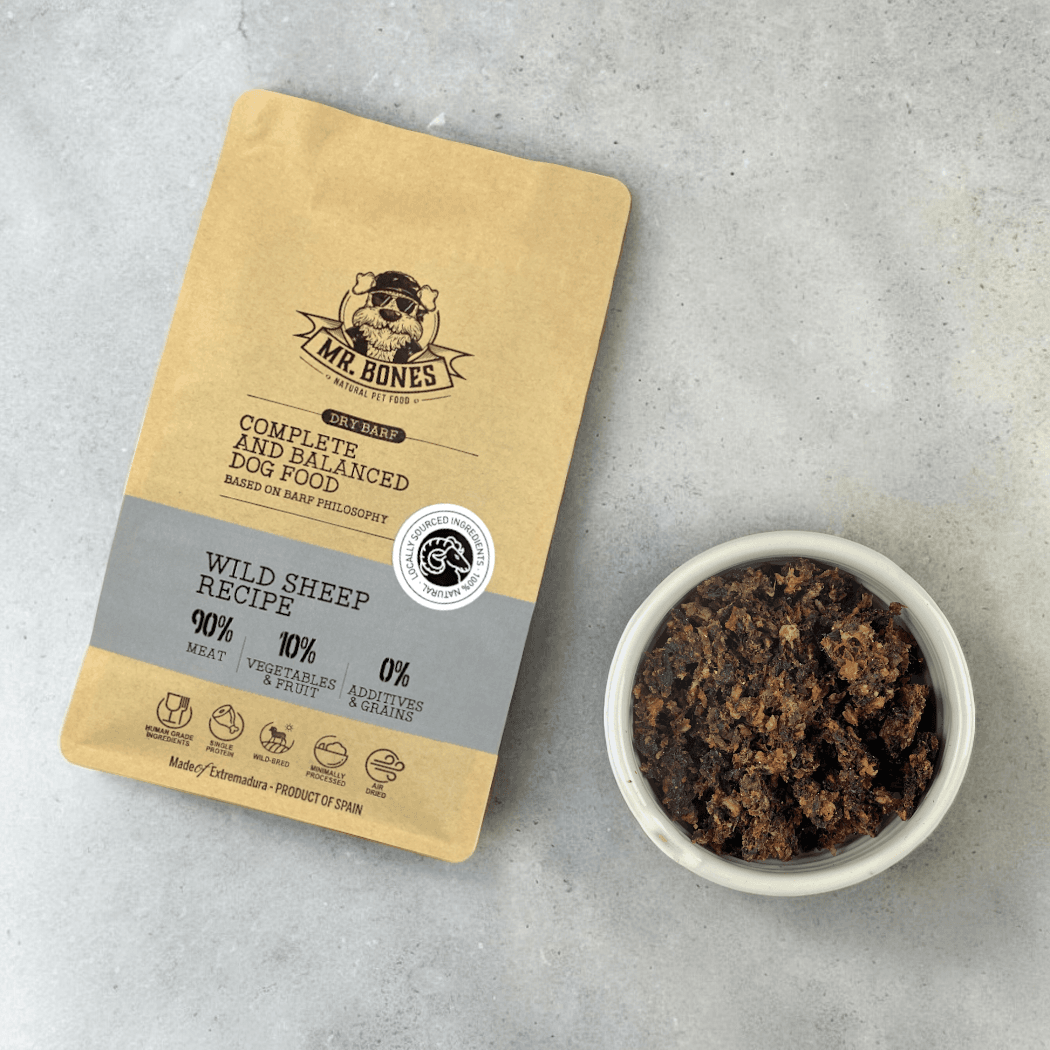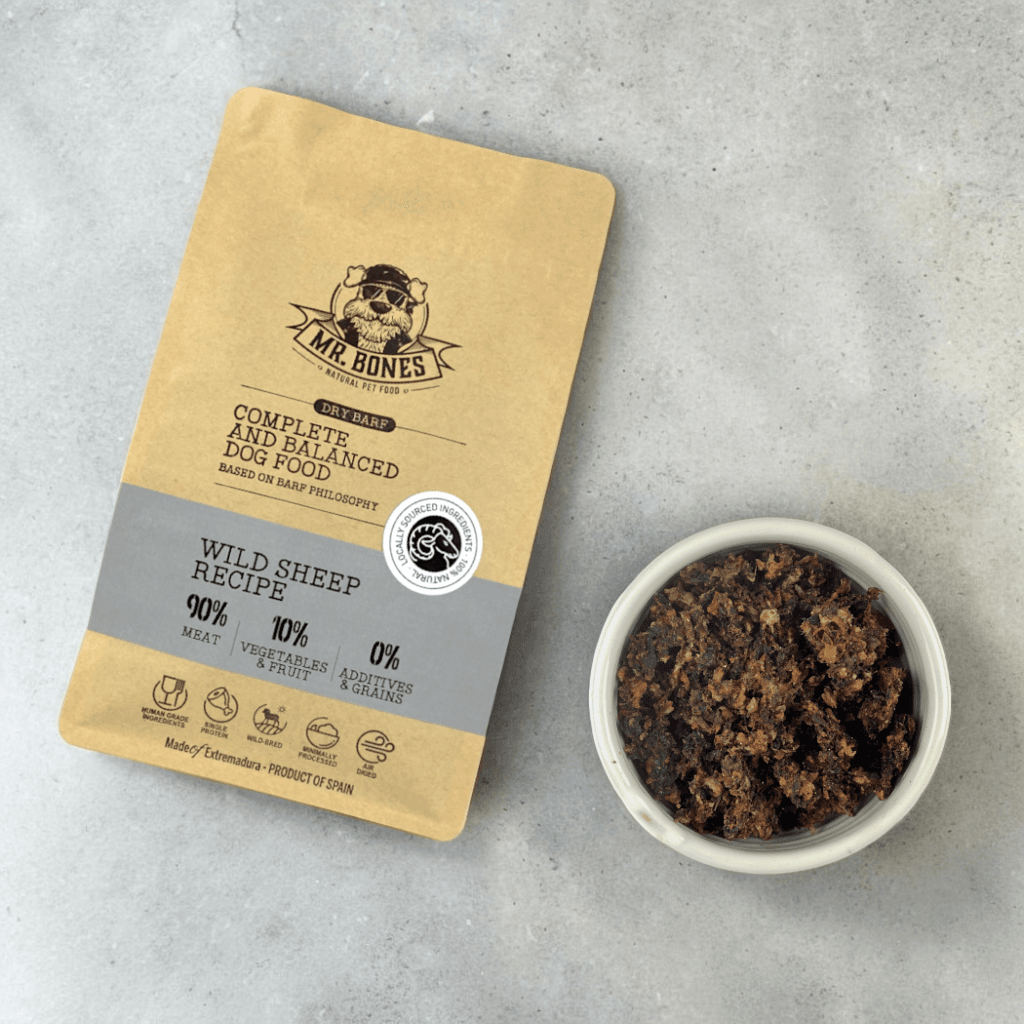How to switch to dry BARF: a natural dog food with many benefits


Transition to dried BREF
Changing your dog's diet can seem like a challenge, but with the right approach, switching to dry BARF can be simple and beneficial for your furry friend. Below, we'll explain how to transition from other types of food (dry food, wet food, BARF, etc.) to dry BARF, ensuring a smooth and easy transition.
Switching from other foods to dried BARF
Before starting the transition to dried BARF, it is necessary to assess whether your dog has digestive sensitivities. You should consider whether your dog has experienced digestive problems such as vomiting or diarrhea when consuming something that is not in its normal diet. Depending on this, we will follow different methods for changing the diet.
IF YOUR DOG IS VERY SENSITIVE
In this case, it is recommended that the dog eat three times a day.
If your puppy is on regular dry food:
Start by giving him a small amount of dried BARF in the morning. After two hours, switch to regular dry dog food. If his digestion is good after two or three days, gradually increase the amount of dried BARF and reduce the amount of dry dog food.
When he starts to eat well, leave a four-hour gap between dried BARF and dry dog food to allow for independent digestion.
First introduce dried BARF for breakfast, and keep dry dog food for lunch and dinner. If everything is going well after two or three days, switch to dried BARF for breakfast and lunch, and keep dry dog food for dinner. If the transition is still successful, you can feed your dog only dried BARF.
If your dog eats natural food:
If your dog eats natural food, BARF, cooked, dehydrated or wet food, you can mix dried BARF with regular food without waiting between meals.
IF YOUR DOG IS NOT VERY SENSITIVE
If your dog regularly eats dry food:
Use the same gradual approach described above, but it is not necessary to start with a small amount. Simply start by introducing dried BARF at breakfast and leave the dry food for the other meals.
Never mix dried BARF with dry food at the same meal, as digestion is different and this can cause digestive problems.
If your dog eats natural food:
You can transition gradually or introduce dried BARF all at once. However, before changing the entire diet, make sure that your dog is not sensitive. If in doubt, start with one serving of dried BARF and keep the rest of the regular food.
Conclusion
Switching to dried BARF – air-dried, all-natural food – can be a crucial step in improving your dog’s quality of life. Whether your dog is sensitive or not, following these steps will help ensure a smooth and safe transition. Using dried BARF will provide your dog with a balanced, nutrient-rich diet based on locally sourced ingredients and all the little details.
Make the switch today and watch how dried BARF transforms your best friend's diet and well-being!








